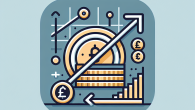
BNPL Explainer: Is Klarna Worth It or Financial Doom?
Learning to Budget: A Beginner’s Guide to Finally Understanding Where Your Money Goes
Hey there! I’m Tom Bradley — just your down-to-earth, slightly coffee-addicted financial guide who’s here to make budgeting less of a headache and more of a “hey, I can totally do this” kind of thing. Whether you’re trying to stop living paycheck to paycheck or simply figure out why you always feel broke on the 20th of the month, you’re in the right place.
Why Budgeting Isn’t the Enemy
Let’s start by setting the record straight: budgeting isn’t about deprivation — it’s about direction. It’s not some joyless spreadsheet that tells you to skip every coffee or never take a vacation. A good budget is a plan for your money to work for you, not against you.
Think of a budget like Google Maps. You type in your destination (let’s say financial freedom or, I dunno, retiring without panic attacks), and it gives you different routes to get there. Without it, you’re just… guessing. And let’s be real — your bank balance probably won’t applaud your guesswork.
Step 1: Know Your Numbers
Before you can start budgeting, you’ve got to get brutally honest about what’s coming in and what’s going out.
Track Your Income
Start with your take-home pay — after taxes, health insurance, retirement contributions, and so on. This is your “net income,” aka what actually lands in your bank account. Include side hustles, tips, or irregular income from freelance gigs.
List Your Expenses
Now here’s the fun part (and by fun, I mean the part where you realize you spent more at Uber Eats last month than you did on groceries). Break your expenses down into two categories:
- Fixed expenses: Rent, car payment, insurance, subscriptions
- Variable expenses: Groceries, dining out, gas, entertainment
Use banking apps or tools like Mint, YNAB, or a good old-fashioned spreadsheet to track where each dollar went last month. I know — it’s like financial archaeology. But necessary.
Step 2: Choose a Budgeting Method
The best budget is the one you’ll actually stick to. Here are a few beginner-friendly options you can try:
1. The 50/30/20 Rule
- 50% of your income goes to needs (rent, bills, groceries)
- 30% goes to wants (dining out, Netflix, gadgets you swear you needed)
- 20% goes to savings and debt repayment
This method is perfect if you like guidelines but hate micromanaging every penny. It’s flexible, easy to remember, and comes training-wheels-ready.
2. Zero-Based Budgeting
Here, every dollar gets a job. You allocate your entire income to specific categories — from rent to your rainy-day fund — and by month-end, your “leftover” money should be $0. Not unaccounted for — just 100% intentional. That’s budget boss mode.
3. Envelope System (Digital or Physical)
Old-school, but it works. You separate cash into envelopes for each expense category. When the envelope is empty, that’s it for the month — no cheating allowed.
You can also use digital versions (like Goodbudget) for a modern spin on this trusted method.
Step 3: Build a Buffer, Not Just a Budget
Once you’ve got your income and expenses under control, it’s time to prepare for the unexpected. Because guess what? Life is full of those.
Start with an Emergency Fund
Aim to stash at least $500 to $1,000 in a high-yield savings account as your starter emergency fund. Eventually, grow it to cover 3–6 months of expenses. It’s your financial seatbelt for when life hits the brakes — and trust me, it will.
Pay Off High-Interest Debt
If you’re carrying credit card debt, budgeting can help you knock it out. Use the debt snowball (paying off smallest debts first) or the debt avalanche (attacking the highest interest rates) to stay motivated and strategic.
Step 4: Track, Adjust, Repeat
This is where most first-time budgeters fall off the wagon — they make a budget once and never look at it again. But your budget is a living, breathing roadmap. It needs check-ins, high-fives, and the occasional course corrections.
Do Weekly Mini Check-ins
Set aside 15 minutes every Sunday (with coffee or a glass of wine, your call) to look over your spending. Are you staying on track? Did you forget to budget for that birthday gift or last-minute parking ticket?
Adjust as Life Happens
Got a raise? Great! Your budget’s getting a glow-up. Unexpected car repair? Time to reallocate. Life doesn’t stay the same — neither should your budget.
Bonus: Make It Fun (Yes, Really)
Budgeting doesn’t have to mean spreadsheets written in accountant-gibberish. Turn it into a game:
- Set rewards for hitting savings goals
- Challenge yourself to a “no-spend week”
- Use colorful apps or budgeting journals that you actually enjoy opening
And for the win: Celebrate your wins, no matter how small. Paid off a credit card? Did your first month of tracking expenses? That’s huge! Pizza party — budgeted for, of course.
Final Thoughts: No Shame, Just Progress
Let me be real with you — budgeting takes practice. You might mess up. You might overspend one category and underspend another. That’s normal. The key is to start, stay consistent, and keep adjusting.
And if you’re ever stuck, overwhelmed or just need someone to cheer you on, I’m right here. You’ve got this!
Got questions, feedback, or want to share your budgeting win? Send me a message. And if you’re curious about how Financeone got started, swing by our About page.









Leave a Reply